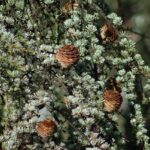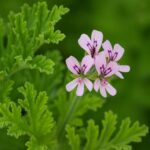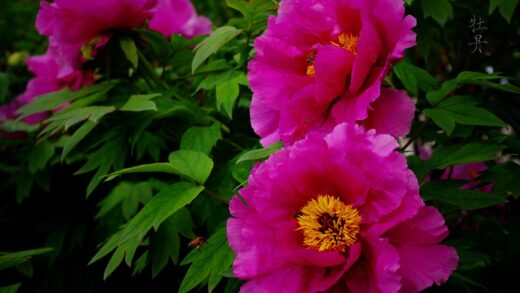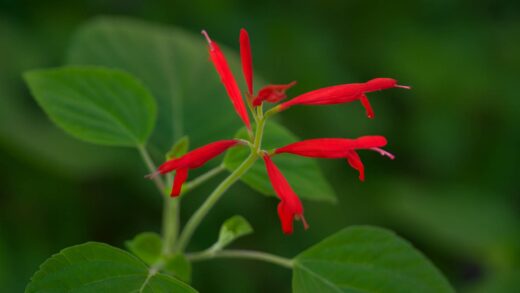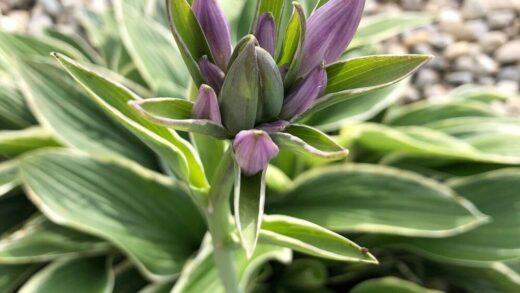Cherry laurel, known for its lush, evergreen foliage and rapid growth, is a popular choice for hedges and ornamental plantings in many gardens. Proper care is essential to ensure these shrubs remain healthy, vibrant, and fulfill their intended role in the landscape. This involves a holistic approach, considering everything from soil conditions and watering schedules to pruning and pest management. Understanding the fundamental needs of this plant is the first step toward cultivating a dense, beautiful, and long-lasting feature. By providing the right environment and consistent attention, you can help your cherry laurel thrive for years to come, avoiding common issues that can detract from its appearance and vigor.
This versatile shrub is remarkably adaptable, but it performs best under specific conditions that mimic its native habitat. It prefers well-drained soil that is rich in organic matter, which helps retain adequate moisture without becoming waterlogged. While it tolerates a range of soil pH levels, it flourishes in slightly acidic to neutral conditions. Poorly drained or heavy clay soils can lead to root rot, one of the most significant threats to the plant’s health. Therefore, amending the soil before planting is a crucial step for long-term success, ensuring a strong foundation for root development and nutrient uptake.
Water is a critical component of cherry laurel care, particularly during its establishment phase and in periods of drought. Young plants require consistent moisture to develop a robust root system, so regular watering is non-negotiable for the first couple of years. Once established, cherry laurel is surprisingly drought-tolerant, but its appearance will suffer without occasional deep watering during prolonged dry spells. The key is to provide enough water to moisten the entire root zone without creating saturated conditions. Mulching around the base of the plant can significantly help in retaining soil moisture and regulating temperature.
Ultimately, the goal of a comprehensive care regimen is to promote strong, resilient growth that can naturally fend off many common problems. A well-cared-for plant is less susceptible to pests and diseases and recovers more quickly from environmental stress or pruning. Regular observation is part of good care; by frequently checking the leaves, stems, and overall structure, you can catch potential issues early before they become severe. This proactive approach, combining proper siting, soil preparation, and ongoing maintenance, is the most effective strategy for maintaining a stunning cherry laurel specimen.
Soil and location requirements
The ideal location for a cherry laurel is one that offers a balance of sunlight and protection. While it can tolerate deep shade and full sun, it thrives best in partial shade, especially in climates with hot summers. Morning sun followed by afternoon shade provides the perfect environment, preventing the leaves from scorching while still allowing for sufficient photosynthesis to fuel dense growth. It is also important to consider protection from harsh winter winds, which can cause desiccation and leaf burn, a condition known as winter browning. Planting on the leeward side of a building or a windbreak can make a significant difference in its winter survival.
More articles on this topic
The soil itself is perhaps the most critical factor in the long-term health of a cherry laurel. These plants demand soil that drains freely, as their roots are highly susceptible to rot in waterlogged conditions. Before planting, it is wise to assess the soil’s drainage capacity by digging a hole and filling it with water; if it takes more than a few hours to drain, the soil structure needs improvement. Heavy clay soils should be amended with organic materials like compost, aged pine bark, or well-rotted manure. This not only improves drainage but also enriches the soil with essential nutrients and enhances its structure.
Soil pH also plays a role in the plant’s ability to absorb nutrients. Cherry laurels prefer a pH range between 6.0 and 7.5, which is slightly acidic to neutral. In highly alkaline soils, the plant may struggle to take up iron, leading to a condition called iron chlorosis, characterized by yellowing leaves with green veins. A simple soil test can determine the current pH, and amendments can be made accordingly. For alkaline soils, adding elemental sulfur or sphagnum peat moss can help lower the pH over time, making nutrients more available to the plant and promoting healthier, greener foliage.
Finally, when choosing a location, consider the mature size of the specific cultivar you are planting. Some varieties can grow quite large, both in height and spread, and require ample space to reach their full potential without overcrowding neighboring plants. Planting too close to foundations, walkways, or other structures can lead to future problems, including root damage to infrastructure and the need for excessive pruning. Proper spacing from the outset ensures good air circulation, which helps prevent fungal diseases, and allows the shrub to develop its natural, graceful form.
Watering and moisture management
Effective watering practices for cherry laurel are based on consistency and deep soaking rather than frequent, shallow applications. When you water, the goal is to moisten the soil to a depth that encourages the roots to grow deep and strong, making the plant more resilient to drought. For newly planted shrubs, this typically means watering deeply once or twice a week, depending on rainfall and temperature. You can check the soil moisture by inserting a finger a few inches deep; if it feels dry at that depth, it is time to water. This careful attention during the first one to two growing seasons is crucial for establishment.
More articles on this topic
Once a cherry laurel is well-established, its watering needs decrease significantly. An established plant has a more extensive root system capable of sourcing water from a larger volume of soil. During periods of normal rainfall, mature plants may not require any supplemental irrigation at all. However, in extended periods of heat and drought, providing a deep watering every few weeks will help maintain the plant’s vigor and prevent stress-related issues like leaf drop or increased susceptibility to pests. Always water at the base of the plant to deliver moisture directly to the root zone and avoid wetting the foliage, which can promote fungal diseases.
The application of mulch is a cornerstone of effective moisture management for cherry laurels. A two- to three-inch layer of organic mulch, such as shredded bark, wood chips, or compost, spread around the base of the plant offers numerous benefits. It insulates the soil, keeping the roots cooler in summer and warmer in winter, and most importantly, it significantly reduces water evaporation from the soil surface. Mulch also helps to suppress weed growth, which would otherwise compete with the shrub for water and nutrients. Be sure to keep the mulch a few inches away from the main stem to prevent moisture buildup that could lead to bark rot.
Recognizing the signs of improper watering is key to correcting your approach before serious damage occurs. An underwatered cherry laurel will often exhibit wilting, drooping, or yellowing leaves that may eventually turn brown and fall off. Conversely, an overwatered plant can show similar symptoms, such as yellowing leaves, but the soil will be consistently soggy. Overwatering is far more dangerous as it can lead to root rot, a fungal disease that suffocates the roots and can kill the plant. Therefore, it is always better to err on the side of slightly drier soil and to check the moisture levels before applying more water.
Fertilizing for optimal growth
Cherry laurels are not particularly heavy feeders, but they do benefit from a balanced supply of nutrients to support their vigorous growth and maintain their deep green leaf color. The best time to fertilize is in the early spring, just as new growth begins to emerge. This application provides the necessary resources for the plant to produce a flush of healthy new leaves and stems throughout the growing season. A second, lighter application can be made in mid-summer if the plant shows signs of nutrient deficiency or if growth appears sluggish, but avoid fertilizing late in the season. Late-season fertilization can encourage tender new growth that may be damaged by the first frosts.
A slow-release, balanced granular fertilizer is an excellent choice for cherry laurels. Look for a product with a balanced N-P-K ratio, such as 10-10-10, or one specifically formulated for evergreen trees and shrubs. Slow-release formulas provide a steady supply of nutrients over several months, preventing the rapid, weak growth that can result from excessive nitrogen and reducing the risk of fertilizer burn. Always follow the application rates recommended on the product label, as applying too much fertilizer can be more harmful than not applying any at all. The fertilizer should be spread evenly over the root zone, extending from near the base out to the plant’s dripline, and then watered in thoroughly.
Organic matter is a fantastic natural fertilizer and soil conditioner for cherry laurels. Incorporating compost or well-rotted manure into the soil at planting time gives the shrub a strong start. Additionally, top-dressing with a layer of compost each spring can provide a slow, gentle release of essential nutrients throughout the year. This approach not only feeds the plant but also improves the soil structure, enhances its water-holding capacity, and encourages beneficial microbial activity in the root zone. Using organic amendments is a sustainable way to maintain soil fertility and promote overall plant health.
It is important to be able to recognize the signs of nutrient deficiencies, which can guide your fertilization strategy. The most common issue is nitrogen deficiency, which typically appears as a uniform yellowing of the older, lower leaves. Iron deficiency, or chlorosis, manifests as yellowing leaves with distinct green veins and usually affects the newest growth first. If you suspect a deficiency, it may be beneficial to conduct a soil test to get a precise understanding of the nutrient levels and pH. This allows you to address the specific needs of your plant rather than applying a general-purpose fertilizer that may not correct the underlying issue.
Pruning for health and shape
Pruning is a vital aspect of cherry laurel care, serving multiple purposes from maintaining a desired size and shape to promoting plant health. The primary goal of pruning is to encourage dense, bushy growth, which is especially important when growing these shrubs as a hedge. By selectively trimming the branches, you stimulate the plant to produce new shoots, resulting in a fuller and more compact form. Pruning also allows for the removal of any dead, damaged, or diseased wood, which improves the overall health and appearance of the plant and prevents the spread of potential pathogens.
The best time to prune cherry laurel is in the late spring or early summer, immediately after it has finished flowering. Pruning at this time allows you to shape the plant without sacrificing the current season’s blooms and gives it ample time to recover and produce new growth before winter. A light trim can also be performed in late summer if necessary to maintain a tidy shape. Avoid heavy pruning in the autumn, as this can encourage a flush of new growth that will be too tender to survive the winter cold, leading to dieback and damage.
When making pruning cuts, it is important to use sharp, clean tools to ensure a smooth cut that heals quickly. For shaping a hedge, hand shears or a powered hedge trimmer can be used to create a uniform surface. It is often recommended to shape the hedge so that it is slightly wider at the base than at the top. This allows sunlight to reach the lower branches, preventing them from becoming bare and leggy over time. For more selective pruning of individual branches, a pair of sharp secateurs or loppers is ideal, allowing you to make precise cuts back to a leaf node or a side branch.
In cases where a cherry laurel has become severely overgrown or leggy, a more drastic approach known as rejuvenation or hard pruning can be undertaken. This involves cutting the entire plant back to within 6 to 12 inches of the ground. While this seems extreme, cherry laurels respond very well to this treatment and will quickly send up a multitude of new shoots from the base. The best time to perform a hard prune is in late winter or early spring, just before new growth begins. The resulting new growth will be vigorous and dense, effectively restoring the shrub to a more manageable and attractive form.
Pest and disease management overview
While generally robust, cherry laurels can be susceptible to a number of pests and diseases, particularly when stressed by poor growing conditions. Proactive management, focused on prevention, is the most effective strategy. This begins with providing the plant with its ideal environment: well-drained soil, appropriate sunlight, and adequate air circulation. A healthy, vigorous plant is naturally more resistant to attacks from pests and pathogens. Regularly inspecting your plants allows for early detection of any issues, making them much easier to control before they escalate into serious problems.
One of the most common issues affecting cherry laurel is shot hole disease, which can be caused by either a fungus or a bacterium. This condition presents as small, dark spots on the leaves that eventually dry up and fall out, leaving behind a series of holes that look as if the leaf was hit by shotgun pellets. While visually unappealing, it is rarely fatal to the plant. Management involves improving air circulation through proper pruning and avoiding overhead watering that keeps the foliage wet for extended periods. In severe cases, a copper-based fungicide applied in the spring can help manage the fungal form of the disease.
Root rot is another significant threat, almost always caused by poorly drained, waterlogged soils. This fungal disease attacks the root system, causing it to decay and lose its ability to absorb water and nutrients. Above-ground symptoms include wilting, yellowing leaves, and branch dieback. Unfortunately, by the time these symptoms are visible, the damage to the roots is often extensive and difficult to reverse. Prevention is paramount and involves ensuring excellent soil drainage at the time of planting. If root rot is suspected, reducing irrigation and allowing the soil to dry out may help in mild cases.
Among the pests that can affect cherry laurel, vine weevils and scale insects are two of the more common culprits. Adult vine weevils chew characteristic notches into the edges of the leaves, which is mostly cosmetic damage. However, their larvae live in the soil and feed on the roots, which can cause significant harm, especially to younger plants. Scale insects appear as small, immobile bumps on the stems and undersides of leaves, feeding on the plant’s sap and potentially causing leaf yellowing and dieback. Both can often be managed with horticultural oil sprays applied at the correct time of year or by encouraging natural predators in the garden.







